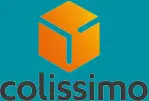La pouvoir caché des arbres
Par: Thierry Beaufort
Coming soon
ISBN :
Title :
La pouvoir caché des arbres
Release title :
Page number :
Format : 20 x 24
About the author


Livraison expresse

Free shipping from 76€ France only
Coming soon
ISBN :
Title :
Release title :
Page number :
Format : 20 x 24


Livraison expresse

Free shipping from 76€ France only